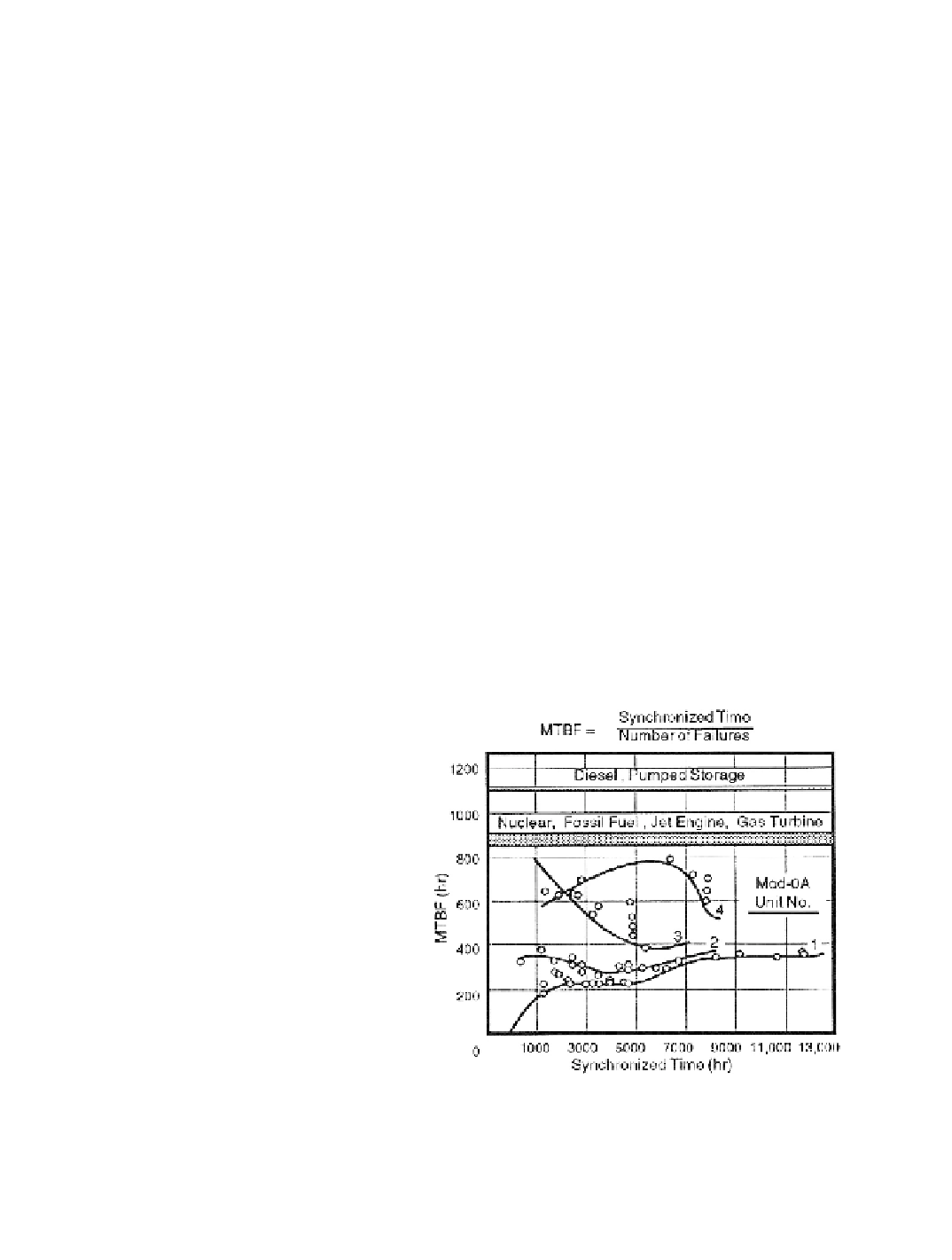Environmental Engineering Reference
In-Depth Information
issues could have remained unidentiied if the wind turbine rating was an extremely small
percentage of the local generating capacity.
The irst unit was fabricated at NASA Lewis, while a parallel contract was awarded to
Westinghouse Electric Corporation
to construct the remainder. While ostensibly identical,
each machine received detailed improvements based on the experiences of the prior
installation. The
Lockheed Corporation
, which had built the original fabricated-aluminum
blades for the Mod-0, provided the initial sets of Mod-0A blades to the same general design
but with thicker skin panels. However, the downwind coniguration and rigid hub intro-
duced high and (at that time) uncertain dynamic loads that caused fatigue cracks in the
aluminum skins and ribs near the blade roots. Eventually all four rotors were itted with
laminated wood-epoxy or iberglass blades and operated successfully for extended periods.
Probably the most severe operational test of the Mod-0A came in the installation at
Block Island, which was one of the reasons for the selection of that site. The Block Island
grid is powered by several diesel-electric generators and is not interconnected with any
other utility. Block Island has many summer vacationers and only a very small year-round
population. Thus, summer peak loads reach over 1,800 kW, while during night hours in
winter (which is also the high-wind season) the total load can go down to only a few
hundred kilowatts. Occasionally the Mod-0A at 200 kW was producing over 50 percent of
the power for the island. This large penetration introduced several problems in terms of
both
voltage and frequency stability
and diesel operating problems caused by excessive
throttling. The Block Island Mod-0A was therefore derated to 150 kW during winter opera-
tions, unless under special test.
When the Mod-0A project was completed in June 1982, the four machines had
accumulated over 38,000 hours of operating time and had fed some 3.6 million kWh into
their host utility grids [Shaltens and Birchenough 1983]. At a
Hawaiian Electric Company
site near Kahuku, the fourth and most reliable Mod-0A (Fig. 3-30) achieved a
capacity
factor
of 0.48 during its last months of operation and was a principal cause of the devel-
oping interest in wind power in the Hawaiian Islands. The highly successful operation of
the Kahuku turbine also led its builder, the Westinghouse Corporation, to privately develop
a 600-kW HAWT and Hawaiian Electric Industries (the parent corporation of the utility)
to participate in the later Mod-5B
program and encourage private
wind power developers. The most
important contribution of the four
Mod-0A HAWTs was that they
produced the irst visible evidence
that wind turbines, while not yet
cost-effective, could be success-
fully integrated into a utility's
normal operations and could pro-
duce high-quality AC power of
value to that utility. They also
provided a technology base that
paved the way for the growth in
size of privately-developed wind
turbines, from the 10- to 15-m
diameter and 10- to 25-kW sizes
of the early 1970s to the 100- to
300-kW and 20- to 30-m diameter
turbines that were developed and
installed in the late 1980s.
Figure 3-30. Mod-0A mean times between failure.
Unit No. 4, on Oahu in the Hawaiian Islands, was the
most durable.
[Shaltens and Birchenough 1983]

Search WWH ::

Custom Search